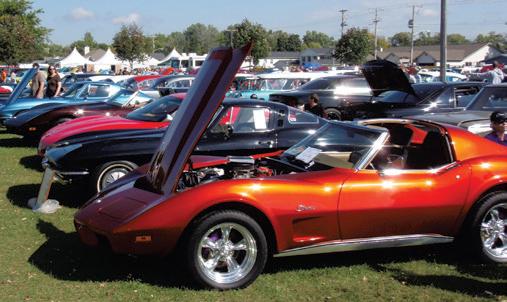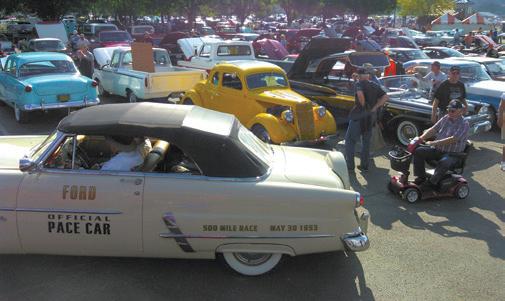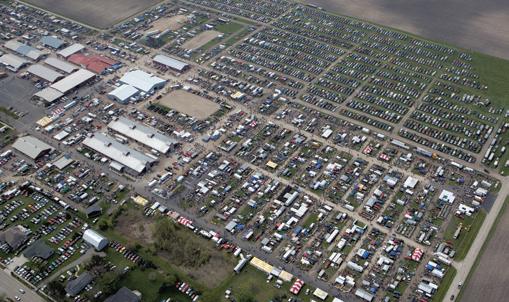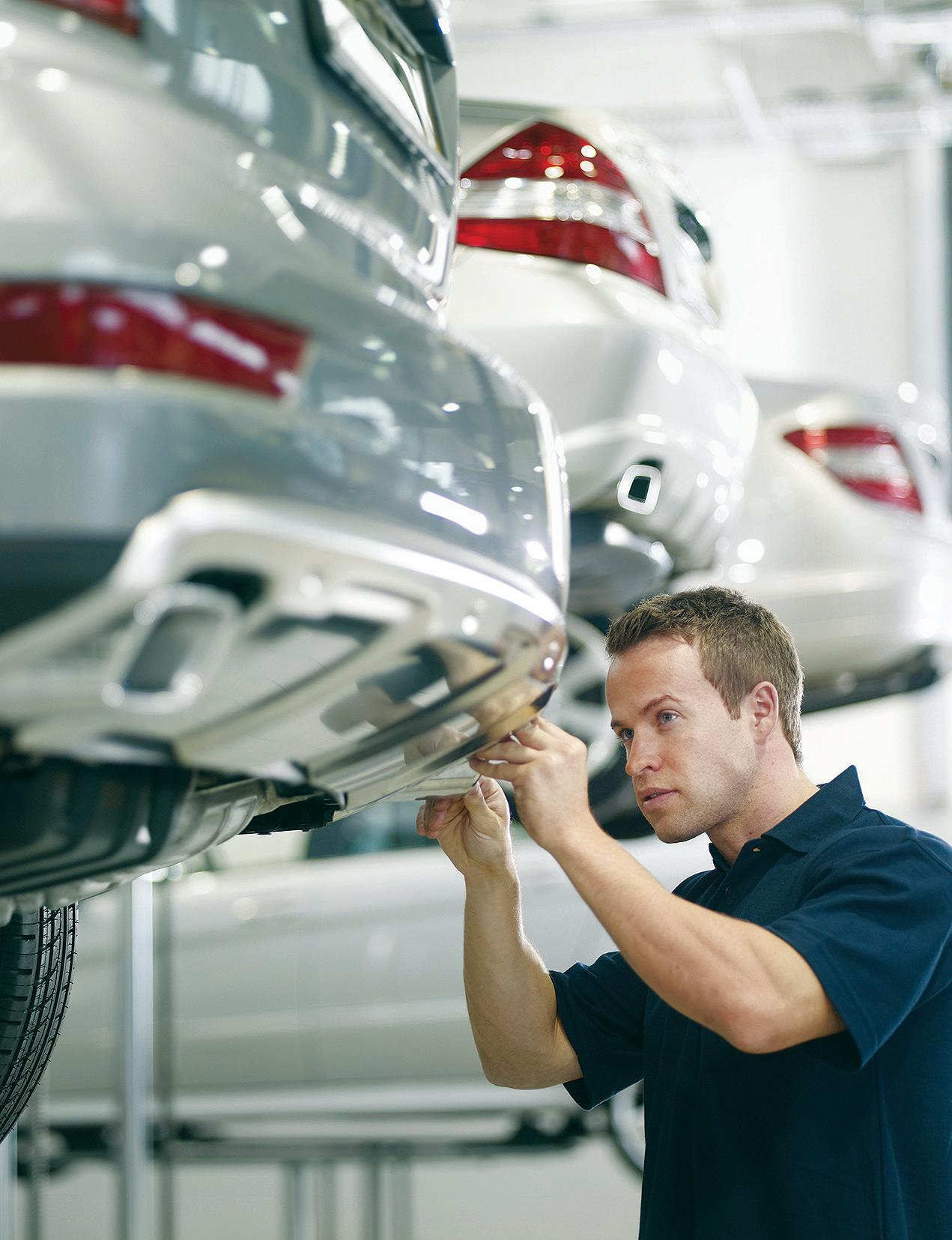




The cost of owning a vehicle has risen dramatically in recent years. Though prices at the gas pump have done much to stretch drivers’ budgets, supply shortages related to the COVID-19 pandemic hit motorists’ bottom lines even before the average gallon of gas reached unimaginable levels in mid-2022.
Though it’s certainly not an inexpensive time to own a vehicle, drivers can take solace knowing that these four basic vehicle maintenance tasks can be performed at home and save them money.

Among the simplest DIY vehicle maintenance tasks, changing the air filter on a car or truck requires no special tools. Changing an air filter can be done in as little as 10 minutes, though novices might need more time until they get a feel for what’s under the hood. Vehicle owners’ manuals can indicate where the air filter is and how frequently it should be replaced.
Changing wiper blades is another simple DIY task that doesn’t require any special tools. Streaking is a telltale sign blades should be replaced, and some blades even start to come apart after excessive wear and tear.
The time it takes to perform this task could depend on how long it takes to remove the old blades, which can take time until DIYers get a handle on how to quickly remove them.
According to Bankrate.com, the average cost of a top service oil change at six nationwide franchises exceeded $75 in May 2022. But this relatively simple task can be performed at home rather easily. Drivers will need to invest in a ratchet, oil filter wrench, oil pan, and funnel, but that’s all they need to change their own vehicle oil. A jack will be necessary as well, but most new vehicles come with a jack.
Drivers can save on that costly fuel by keeping their tires properly inflated at all times. Poorly inflated tires make the engine work harder to get the vehicle down the road, and that extra work wastes fuel.
A portable tire inflator can read the pressure in each tire and drivers can then inflate the tires to the PSI recommended in their owner’s manual. A quality tire inflator can be purchased for less than $100.
(METRO CREATIVE)
It’s not uncommon for aging individuals to feel less comfortable driving as they approach their golden years. Whether it’s glare from LED lights, aches and pains that often accompany aging or age-related vision issues, older drivers’ comfort behind the wheel can be compromised by a host of variables.

Though older drivers cannot reverse the aging process, they can try various strategies to make themselves more comfortable behind the wheel.
• Share driving duties on long trips. The National Institute on Aging notes that stiffening joints and weakened muscles are a common byproduct of aging.
In addition, the Arthritis Foundation® notes that more than one in two men and two in three women over age 65 have arthritis, which also can make driving less comfortable.
Age-related aches and pains and arthritis can make it very uncomfortable to drive for lengthy periods of time when drivers are sitting in roughly the same position for the duration of their trip. In such instances, drivers can share driving duties to make long trips more manageable.
• Upgrade to a vehicle with modern amenities. Various amenities in modern vehicles make driving more comfortable for everyone, especially individuals with age-related aches and pains.
Heated seats and in-car climate control can help reduce the discomfort caused by aches and pains and ensure drivers and passengers can tailor the temperature in the vehicle to their own preferences.
• Protect your eyesight. Much of the discomfort older drivers experience behind the wheel has to do with eyesight. The NIA urges individuals 65 and older to see their eye doctor every year. Such visits can ensure prescriptions are current and that can make drivers more confident in their ability to see everything on the road.
Drivers also can speak to their eye
doctors about night driving glasses, which are designed to help nighttime drivers overcome glare from headlights and street lamps.
• Drive more defensively. A greater emphasis on defensive driving also can help aging drivers feel more comfortable behind the wheel. The NIA notes that reflexes naturally slow down as a person ages, which adversely affects older drivers’ reaction times.
Drivers can counter this by leaving more space between their vehicles and the one in front of them. Braking earlier and avoiding driving during times marked by heavy traffic, such as rush hour, also can help drivers feel more comfortable. It’s natural for aging drivers to feel less comfortable behind the wheel than they did when they were young. But drivers can take various steps to increase their comfort levels so they can stay on the road.
The prevalence of technology has ensured that many things are competing for people’s attention at any given moment. That includes when people are driving, which has contributed to a dangerous phenomenon known as distracted driving.
The National Highway Traffic Safety Administration reports that there were nearly 36,000 fatal crashes involving distracted drivers in 2020. Such numbers are sobering, but it’s worth nothing that handheld cellphone usage by drivers declined significantly across all age groups between 2012 and 2021.
NHTSA data indicates such usage declined from 5.9 percent in 2012 to 3.7 percent by 2021 among drivers between the ages of 16 and 24. Among drivers between the ages of 25 and 69, driver handheld cellphone usage dropped from 5.4 percent in 2012 to 2.5 percent by 2021.

But the work isn’t done, as the NHTSA notes that a significant uptick of driver handheld cellphone usage among drivers between the ages of 16 and 24 was reported between 2020 (2.8 percent) and 2021 (3.7 percent). With so much to gain from eliminating distracted driving, drivers of all ages can consider these strategies to avoid distractions while behind the wheel.

• Turn off notifications. According to
the app industry resource BusinessofApps, the average smartphone user in the United States receives 46 app push notifications each day.
Additional sources estimate that figure could be closer to 80 push notifications per
day. There’s no denying the allure of such notifications, so drivers who find them too hard to resist can turn all notifications off prior to getting behind the wheel. This is quickly and easily accomplished through the settings function on a smartphone.
• Avoid making calls. Hands-free capabilities may make it easier to keep both hands on the wheel, but they don’t ensure drivers’ minds will stay on the road.
Hands-free phone calls and voiceactivated messaging apps take drivers’ minds off the road. When behind the wheel, resolve to stick to driving and driving alone by avoiding making phone calls or receiving and sending messages.
• Stay focused at stoplights. Red lights present another tempting chance to peruse text messages, emails and push notifications. But drivers can easily be drawn into conversations that continue long after a red light has turned to green.
So it’s best to maintain your focus at stoplights by waiting patiently for the light to turn and avoiding your phone entirely.
• Utilize airplane mode if necessary. If none of the above recommendations are working, drivers can always switch their phones to airplane mode when driving. Doing so effectively blocks all incoming messages and distractions from being received by the phone until airplane mode is then turned off.
All accidents involving distracted driving incidents are preventable. Drivers can take simple and more extensive measures to reduce their vulnerability to distractions while behind the wheel.
All-Tech Auto Service is owned and operated by a ASE graduate who served as a mechanic in the Marine Corp. We are a family business that started in 2002 as a small shop in a small town. After 15 years, we moved to a larger facility at our current location to better accommodate our growing customer base.
Here, we’re big on service. We went into business because we take pride in our work and have the knowledge and skill to take care of your vehicle the right way the first time.
You can count on our service technicians to get you back on the road fast, without compromising quality. It’s why we’re honored to be the trusted name in auto repair and maintenance for families across Clinton, Wisconsin and surrounding areas.
As a NAPA AutoCare Center, we back qualifying work through nationwide
warranty. Our auto repair shop uses highquality parts, like JASPER engine and transmissions, and we meet all requirements necessary for an unmatched experience. Visit us today, and see why hometown service matters.
Reasons to Choose All-Tech Auto Service
• New Tires: Explore our tire catalog and compare options from leading brands like Hankook, Laufenn, Firestone, Goodyear, and MICHELIN®
• Automotive Repairs: Get repairs to keep your vehicle running like it should. We offer A/C repair, battery replacement, belt and hose replacement, brake repairs, cooling system services, engine diagnostics and repairs, steering and suspension work, wheel alignments, and much more.
• Specialized Services: See us for custom exhaust work and lift kit installation

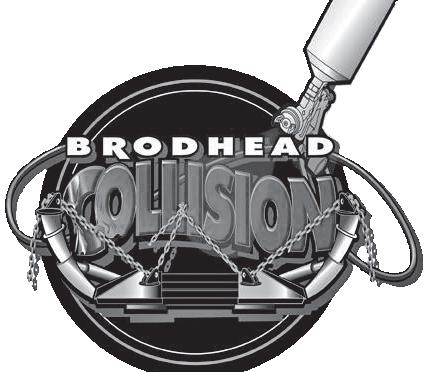
• Nationwide Warranty: Drive with peace of mind knowing your qualifying repair is covered through the NAPA Peace of Mind Warranty. It’s just one of the benefits of choosing your local, NAPA AutoCare Center.
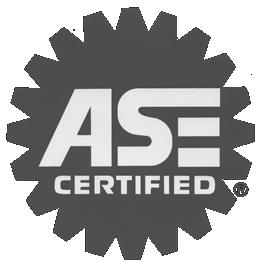
• Preventive Maintenance: Follow your owner’s manual for recommended maintenance services. See us for your next lube and oil change, oil filter change, air filter change, and spring/winter checkup.

• Complimentary Services: Enjoy free refreshments and loaner vehicles, use our night key drop, or ask about pick up and drop off.
All-Tech Auto is located at 301 Industrial Dr., Clinton, Wis. Call 607-676-4000 for more information.
We’re proud to serve Clinton, Wis., Beloit, Wis., Janesville, Wis., and surrounding areas.
Automotive problems are often best left to professionals. Though seasoned car enthusiasts may be capable of diagnosing and fixing car troubles without the assistance of a trusted mechanic, most drivers are better off letting the pros address issues under the hood.
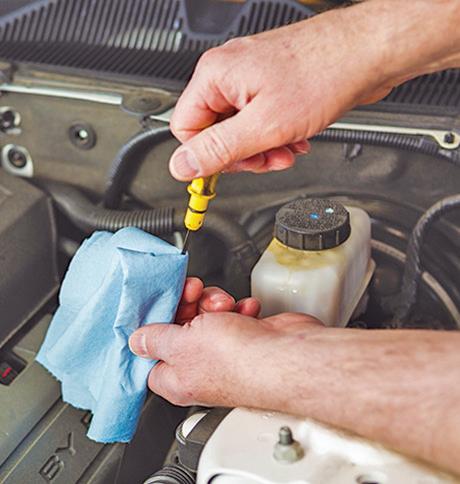
But drivers can still play a vital role in vehicle maintenance. Learning to recognize warning signs of various problems that can affect cars can prevent breakdowns and potentially costly repairs. And in certain instances, such as when the brake system is not working properly, knowing how to spot problems before they escalate into something larger can make drivers and their passengers safer and potentially prevent accidents.
Television shows and movies have lent credence to the notion that brake problems are marked by the sudden cessation of a vehicle’s ability to stop. Though that can happen, warning signs of fading brake systems tend to be more subtle.
• Noises: Much like a knocking sound typically indicates a problem with a vehicle’s air-fuel ration mixture, certain noises also suggest there are problems with the brakes. The most noticeable such sign is a high-pitched squeal that occurs when drivers apply the brakes. But grinding
sounds and noises like scratching and scraping also warrant a visit to a brake specialist.
• Increase in stopping distance: An increase in the distance a vehicle travels before it stops after the brakes are applied indicates that there’s an issue with the brakes.
This issue may or may not require a brake replacement. In fact, it’s sometimes indicative that brake fluid levels are low, which can be remedied quickly and easily. However, an increase in stopping distance is significant enough that it should be brought to the attention of a brake specialist immediately.
• Pulling upon stopping: Another warning sign of brake problems is when the vehicle noticeably pulls to one side as it comes to a stop. This indicates that one side of the brakes is malfunctioning while the other is working properly.
Like other issues with brakes, this one requires immediate attention from an automotive professional.
Brake systems should be inspected during routine maintenance visits. But issues with brakes can arise even after such inspections, which underscores how important it is that drivers learn to recognize the warning signs of brake problems.
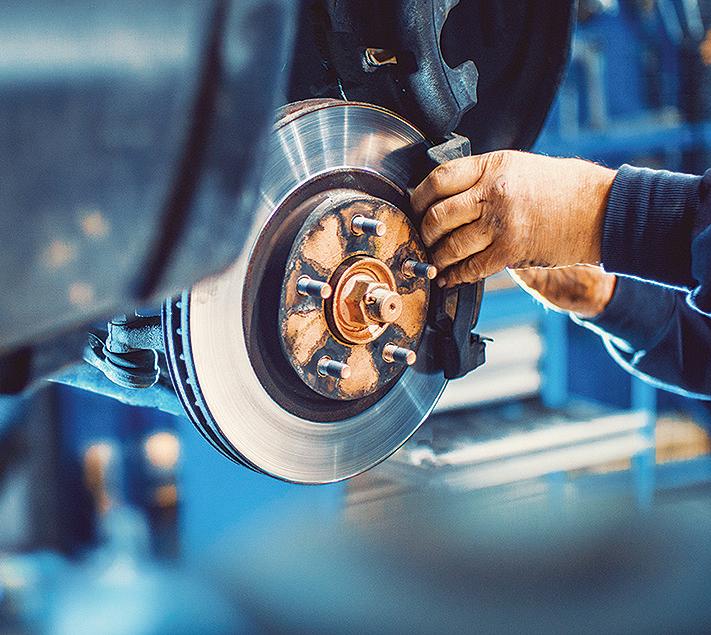
The last few years have not proven the most advantageous times for new car buyers. According to the Consumer Price Index Summary from the United States Bureau of Labor Statistics, buyers paid 12.2 percent more for new vehicles in January 2022 than they had in January 2021.
Faced with such a significant increase in price, many drivers understandably want to keep their current cars longer than they might have initially planned.
Data released by S&P Global Mobility in early 2022 indicated that the average vehicle on the road is 12 years and two months old, which marked the highest number in the 20-plus years such information was tracked.
A host of variables affect how long drivers keep their cars, but the rising cost of new vehicles has undoubtedly compelled many drivers to aspire to keep their cars for longer periods of time.
Aging cars may require a little more TLC than vehicles that are right off the dealership lot. But the following are three simple tips that can help drivers keep their cars running longer.
1. Become a more careful driver. A careful approach when behind the wheel is safer than aggressive driving and beneficial for your vehicle.
When starting, avoid revving the engine, which needlessly wears it down. When out on the road, avoid rapid accelerations, which also contributes to needless wear and tear. Even excessive idling can adversely affect the engine, so keep winter warm-ups to around 30 seconds to prevent damage to engine components.
2. Know when and how to fill up.
Every driver has likely visited a filling station when an oil tanker is busily filling the tanks.

That’s traditionally been considered a less than ideal time to fill up, as the theory is that filling the tanks stirs up sediment that could then find its way into consumers’ gas tanks, adversely affecting their vehicles. However, that’s often dependent on the station itself and how much its owners prioritize maintenance of the tank and filtration systems. Drivers who trust their local station owners can likely fill up when the tankers are present without worry.
In addition, avoid topping off once the nozzle clicks when filling up. The U.S. Environmental Protection Agency notes that topping off is harmful to the planet and the vehicle, as gasoline needs room to expand. When you top off, the extra gas may damage the vapor collection system and cause the vehicle to run less efficiently.
3. Change oil more frequently as the vehicle ages. It’s true that modern vehicles no longer require oil changes for every 3,000 miles driven. However, as vehicles age, drivers and their vehicles’ engines may
benefit from more frequent oil changes than the owner’s manual necessarily recommends.
Oil changes remove dirt and metal particles from the engine, potentially contributing to a longer life expectancy. More frequent changes can be especially beneficial for vehicles that are routinely driven in stop-and-go traffic.
Rising vehicle costs have compelled many drivers to keep their cars longer than they initially planned. Some simple strategies can help drivers achieve that goal.
Urban environments beckon millions of people. In addition to being home to various industries, city centers tend to feature museums, shopping, sight-seeing, and much more.
Although public transportation might be the simplest way to get into and around a city, some metropolitan areas feature inadequate public transit systems, leaving visitors with no choice but to drive.
Driving in metropolitan areas is unlike driving in suburban or rural locations. City driving presents a unique set of challenges. These tips can help drivers unaccustomed to being behind the wheel in urban environments.
Driving on city streets is unlike driving on open highways or suburban roads. A greater number of vehicles leads to more cramped, slow-moving roads. Furthermore, there likely will be more traffic signals, which will do their part to slow down traffic even further.
Few things can be as unsettling when behind the wheel as a sudden noise. Noises coming from a car can indicate a host of issues, and that’s one reason why such sounds tend to be so different. Quickly identifying what’s behind car noises can make for safer driving and potentially save drivers substantial amounts of money.
This noise can be loud and unsettling, but the good news is that it’s often a simple fix if addressed immediately.
The automotive insurance experts at Geico note that a noise that sounds like coins rattling around in a dryer is likely a loose lug nut in a hubcap. The lug nut might have become loose if a wheel was not tightened sufficiently after a recent maintenance appointment or even if drivers changed a tire on their own.
The longer drivers wait to address this, the more dangerous and costly it could become, as it could have
an effect on the wheel bearings. If addressed promptly, the damage is likely minimal.
Noise: Squealing on start-up
Problem: Issue with the serpentine belt
A squealing noise at start-up is among the more annoying noises a driver can hear. This sound is often indicative of a worn or damaged serpentine belt, which connects the crankshaft to the alternator, power steering and additional components.

Thankfully, a worn down serpentine belt is a relatively inexpensive repair, though it’s important that it be addressed promptly. Squealing at start-up also could indicate a loose tensioner, which is designed to keep the serpentine belt at a certain tightness and tension, or wear and tear to the belt due to parking outside.
These issues can be addressed by readjusting or replacing the tensioner or replacing the serpentine belt, particularly if the part is old.
A knocking noise from the engine typically sounds like repeated tapping. The noise will often become louder as the vehicle accelerates. Various issues can be behind the knocking sound, and drivers should avoid self-diagnosing the problem, even if they’ve experienced it in the past with the same or a different vehicle.
Some drivers hear knocking because they’re using 87 octane fuel instead the of the high-performance and more expensive fuel the owner’s manual recommends (this could be a common problem in recent months given the meteoric rise in fuel prices). Another potential cause of engine knock could be problems with the pistons or crankshaft.
Regardless of what’s causing engine knocking, drivers are urged to take their vehicle to a mechanic promptly, as the cost of repairs is likely to rise the longer knocking goes untreated.
(METRO CREATIVE)
Pedestrians typically have the right of way. Urban areas have an abundance of walkers, cyclists and others crossing intersections and sharing the road. It’s important to be mindful of your surroundings because one never knows when a pedestrian might dart out.
If possible, avoid driving in cities during rush hours, which occur twice per day. Lunchtime also can be busy. According to DrivingTests.org, rush hour peaks between 7 and 9 a.m. and 4 and 6 p.m. Drivers who venture into the city during these times likely will be met with gridlock and even slower travel.
Utilize GPS systems and check maps and addresses before departing to have a good idea of the destination. Cities have many streets and one wrong turn can get you stuck in more traffic. Some cities employ one-way streets, so watch where you’re going. Pay attention to signs as well, as they may indicate no left turns at certain hours.
The extra commotion and traffic can be tiresome. Leave plenty of extra time to get to your destination so that you’re not exacerbating your stress by worrying that you’re going to be late. Get sufficient rest and don’t drive hungry, as hunger can lead to anxiety.
In addition to knowing the route, get a good idea of where to park the car in the metropolitan area. Cities have unique parking regulations, including metered parking. Plus, popular points of interest may draw many visitors competing for a limited number of on-street parking spots. It may be worth it to park in a private or public lot/garage. Spot Hero, Secure-a-Spot and ParKing are just a few of the parking assistance apps that enable drivers to find and secure parking in advance.
Driving in urban environments requires a different skill set. Learn what to do and remain patient so the experience is not stressful.

The road is filled with variables that change each time drivers get behind the wheel. Whether it’s aggressive drivers, road construction crews or some other unknown, drivers can never say with certainty what they will encounter while on the road.
Mother Nature is as significant a variable as any drivers will face, and many conditions can turn otherwise ordinary trips into ordeals that put motorists’ skills to the test.
Though heavy rain might not seem as difficult to navigate as snow, it’s vital that drivers recognize the threat posed by such conditions. In fact, the Federal Highway Administration reports that each year 75 percent of weather-related vehicle crashes occur on wet pavement, while 47 percent, or nearly half, happen while rain is falling.
Such statistics are sobering and underscore how dangerous it can be to drive in rain or when roads are wet. Drivers are not helpless in such conditions, especially when they exercise caution in wet conditions.
• Slow down. The National Highway Traffic Safety Administration notes that drivers will have a harder time controlling or stopping their vehicles on slick roads than dry roads. And that’s the case for both experienced and novice motorists.
When driving in the rain or on wet roads, drivers should slow down, even if it requires driving a little below the speed limit.

Though it can be dangerous to drive too slowly on highways, drivers can use
the far-right lane on such roads, which is not considered a passing lane and is often seen as the lane designated for vehicles moving more slowly.
• Leave extra room between your car and other vehicles. The NHTSA also advises increasing the following distance between your vehicle and the one in front of you when driving in rain or on wet roads.
An extra couple of car lengths ensures you will have more time to react and stop if vehicles ahead of you encounter issues.
• Be mindful of pedestrians and cyclists. Though pedestrians and cyclists

typically avoid walking or cycling in heavy rains, that does not mean there will be none on the road.
That’s especially so when heavy rains fall suddenly, leaving pedestrians and cyclists already on the road with little options but to continue.
Visibility can be especially compromised in heavy rains, which makes it even harder to see pedestrians and cyclists.
So drivers should not assume the roads are only populated by fellow motorists and must be especially vigilant to avoid hitting pedestrians and cyclists.
• Travel familiar roads. Though familiarity does not mean motorists can be less vigilant when driving in rain, knowing the roads you’re on and the route you’re taking can ensure your eyes are focused on the road at all times and not periodically glancing at GPS maps on your dashboard.
If you’re planning a road trip and know heavy rain will factor in at some time, familiarize yourself with evacuation routes along the way to your destination. The NHTSA also recommends drivers learn which local radio stations to tune into for emergency alerts.
Motorists know that 2022 has been a record-breaking year for fuel prices. Data from AAA indicates gas prices jumped 55 percent between June 2021 and June 2022. All 50 states now have an average fuel price that exceeds $4 per gallon, with many even surpassing the $5 mark.

The fuel cost comparison resource
Global Petrol Prices reports that, as of May 2022, gas in Canada was on average $2.17
CAD per liter, which comes to roughly $8.22 CAD a gallon, or $6.52 USD per gallon.
The pinch at the pump is being felt by commuters, casual drivers and weekend warriors alike. People across North America are taking whatever steps necessary to conserve fuel.
One of the considerations they may have overlooked is vehicle maintenance.
Poor vehicle performance adversely affects fuel economy, so here’s how to maintain a vehicle with an eye toward conserving fuel.
The U.S. Department of Energy says each decrease in tire pressure by 1 pound per square inch for four tires can decrease fuel economy by 0.2 percent. By keeping tires properly inflated, the average driver can improve gas mileage by as much as 3 percent. Drivers can consult their tire manufacturer’s specifications for proper tire pressure.
Engines require the right blend of products to work efficiently. The DOE says drivers can improve gas mileage by 1 to 2 percent simply by using the recommended grade of motor oil. In addition, look for motor oils that list “Energy Conserving” on the label.
According to Auto Zone, an engine’s ability to produce power is directly related to its ability to draw air in. A clean air filter assists with that function, whereas a dirty filter will reduce engine power and fuel efficiency.
Additional mechanical issues may affect vehicle performance and lead to excessive fuel consumption. A mechanic can run diagnostics on the vehicle and make recommendations on things to repair or replace, such as spark plugs, ignition coils or faulty oxygen sensors.
Debris and moisture in the fuel tank can compromise combustion and impact performance. A fuel treatment product can clean out debris and dry up moisture to restore function and improve miles per gallon.
The air conditioning unit in a vehicle uses power directly from the motor of the car. This means the vehicle consumes extra gas to keep the AC unit running, thereby reducing fuel efficiency.
Remove excess cargo
Clear the trunk or cargo area of extra items that can weigh down the vehicle, requiring more power to move it. Any heavy load will negatively affect mileage. Keeping a vehicle in top form can improve fuel economy, which can be especially beneficial in a time marked by soaring fuel costs.
In recent years, many a motorist has noticed how much more glare they encounter on the road at night than they used to.
The headlights that are now standard in many vehicles can be a catch-22. Drivers of vehicles equipped with LED lights often find the road in front of them is much more illuminated than it was in the days when auto manufacturers built cars and trucks with incandescent lights.
However, the bright light emitted by LED headlights can increase glare for oncoming motorists, making the roads more dangerous for all.
Headlight glare has long been a problem for many drivers. In fact, as far back as 2001 the Highway Traffic and Safety Administration sought input from the public regarding headlight glare.
A subsequent report noted that the issue compelled more responses than any other safety concern, and it’s likely that a similar request would generate an even greater response today.
LED lights might be a problem for millions of motorists, but the efficiency and longevity of these lights makes it unlikely that auto manufacturers will shift to an alternative light source anytime soon.
Until that time comes, drivers can try these strategies to combat glare when driving at night.

• Avoid looking directly at oncoming headlights. It’s important that drivers keep their eyes on the road at all times, but they should be able to do so without staring directly at oncoming lights.
In North America, where oncoming
traffic is always on the left, drivers can slightly shift their focus to the right as lights are oncoming. Doing so should allow them to keep their eyes on the road without staring directly into oncoming lights.
• Purchase night driving glasses. Drivers can consider night driving glasses if they’re having a lot of trouble with glare.
Such glasses differ depending on the manufacturer, but they’re generally intended to reduce glare and reflections from headlights and street lamps.
• Investigate wiper blades. Glare from oncoming headlights contribute to visibility problems when driving at night, and old wiper blades can exacerbate those problems.
Old wiper blades can be compromised by a buildup of dirt and often wear down over time. When coupled with glare, this can significantly reduce visibility at night. Each manufacturer is different, but Ford recommends replacing wiper blades once every 12 months.
• Clean the interior of your windshield. A dirty windshield interior also can exacerbate glare. Grit and dirt build up inside of a vehicle over time, and they can accumulate on the windshield just as easily as they do in a cup holder, on an armrest or on the dashboard.
Various products are designed specifically for cleaning interior windshields, and these could help reduce glare at night.
Glare can make nighttime driving very difficult. Fortunately, drivers can take many steps to reduce glare from oncoming headlights.
When your car’s air conditioning fails, it can be more than a nuisance, it can become a health and safety matter.
Most of us first notice an air conditioning problem when the car gets hot and muggy. But those with allergies can be quickly exposed to irritants when the windows are rolled down.
A cool passenger cabin has also been cited as a factor in keeping the driver alert.
Beyond just cooling the car, the vehicle’s air conditioning system is necessary for defogging the inside of the windows. Without it, the occupants can be at risk in bad weather.
The the air conditioning system will give many hints that something isn’t right. Unusual noises, poor air flow, or blowing hot air instead of cold are all signs of a problem. Each problem could have different causes, perhaps a broken belt, a component failure, an electrical problem, or loss of the pressurized refrigerant.
It’s always best to take your car to a professional service provider who offers full system service and uses the proper tools to find the problem.
If refrigerant is leaking, simply adding more won’t fix it! Refrigerant will continue to escape and the loss may cause other expensive damage as well. Why risk it? Additionally, today’s refrigerant (R-134a) is a potent greenhouse gas regulated by the U.S. EPA.
Professional service shops are required to recover and recycle the chemical, and it is illegal for anyone to release it into the atmosphere.
The best refrigerant for any car is the one initially installed. It’s important to know that since 1995, no automaker has approved any refrigerant other than R-134a for use in their vehicles
A/C systems. Newer cars and trucks use even less refrigerant in newer, more efficient systems. These systems require a precise amount of refrigerant and won’t tolerate mistakes during service.
Too little gas in these systems will cause poor cooling and put other, expensive components at risk because there is not enough lubricant circulating. A more common error, overcharging, puts too much refrigerant into the system and risks damage from much higher internal pressures.
The days of just “topping off” a system are gone, and professional repair shops have the tools and the knowledge to diagnose, repair and recharge a failed system.
To learn more about your vehicle’s air conditioning system, visit the Mobile Air Conditioning Society (MACS) Worldwide website at www. macsw.org
By changing a few habits, you can do their part in helping the environment, say the experts at the National Institute for Automotive Service Excellence (ASE). ASE recommends regular vehicle maintenance and better driving habits as two easy-to-implement strategies. What’s more, improved automotive habits will help your vehicle last longer and command a better resale price.
The following tips from ASE can put you on the road to environmentally conscious car care:
Keep the engine running at peak performance
A misfiring spark plug can reduce fuel efficiency as much as 30 percent. Replace filters and fluids as recommended in the owner’s manual.
Don’t ignore that ‘Service Engine’ light
Today’s vehicles have much cleaner tailpipe emissions that they did 30 years ago, but a poorly running engine or faulty exhaust system will cause your vehicle to pollute much more than it would otherwise.
Keep tires properly inflated, aligned
Not only will you reduce the engine’s effort and, thus, gasoline consumption, your tires will last longer too, saving you money and easing the burden at recycling centers.
Have your vehicle’s air conditioner serviced only by a technician certified to handle, recycle refrigerants
Older air conditioners contain ozonedepleting chemicals, which could be released into the atmosphere through improper service.
Avoid speeding, sudden accelerations
Both of these habits guzzle gas. When waiting for friends or family, shut off the engine. Consolidate daily errands to one trip to eliminate unnecessary driving.
Remove excess items from the vehicle
Less weight equals better gas mileage. Remove that roof-top luggage carrier after vacations to reduce air drag, too.
If you do your own repairs, properly dispose of engine fluids, batteries
Some repair facilities accept these items from consumer. You can also contact local government for hazardous material drop-off/recycling stations. Remember too that improperly disposed fluids such as antifreeze can harm pets and wildlife.
The National Institute for Automotive Service Excellence (ASE) was founded to improve the quality of automotive service and repair through the voluntary testing and certification of automotive technicians. More than 360,000 automotive service professionals hold current ASE certifications.
They work at all types of facilities, from new car dealerships, to national chains, independent repair shops, fleets, parts stores, and more. There employers often display the blue and white ASE sign, while the technicians wear shoulder insignia or lapel pins identifying himself or herself as ASE certified.
Visit www.ase.com for more information and seasonal car care tips.
Drivers expect to experience a few bumps in the road as their vehicles age. While certain issues, such as worn shocks or engine troubles, are best left to the professionals, drivers can address many other issues that commonly affect aging vehicles on their own.
Fluid leaks are one of the more routine problems that plague older vehicles. While leaks are not necessarily a sign of doom and gloom, they tend to distress vehicle owners and can affect drivability. In addition, automotive fluids that seep out of vehicles can prove harmful to the environment.
Leaks may not be a concern for drivers of new vehicles, but studies show that drivers are keeping their vehicles for longer than ever before, suggesting that leaks are becoming a greater issue for more and more motorists.
A 2016 study from the Institute for Highway Safety found that the average age of vehicles on the road in the United States is nearly 12 years. By 2021, the IHS expects a 30 percent increase in vehicles that are 16 years or older.
So how can drivers address leaky vehicles before they contribute to potentially larger, more costly problems? Fortunately, leaks can be a relatively simple fix, which should assuage any fears drivers may have as the numbers on their odometers continue to rise.
Identifying leaks is the first step toward fixing them. According to CRC Industries, a global leader in specialty maintenance and repair chemicals, including K&W brand Stop Leak products, the simplest way to identify which fluid is leaking is to determine its color. CRC notes that red fluid suggests a leak in the power steering system or transmission, while black fluid typically
indicates old oil or transmission fluid that has gone bad. If the leaky fluid is green or yellow, then it’s likely engine coolant.
Once drivers have identified which fluid is leaking, they can then take steps to fix the leak. Unlike other problems that plague older vehicles, leaks can typically be fixed quickly and affordably.
“Stop leak products can really save the day, especially if the leak means that you have to stop driving the vehicle,” says CRC Technical Service Manager Scott Brownstein. “Our K&W Stop Leak solutions are designed to provide faster, less expensive alternatives for drivers who may be facing costly mechanical repairs.”
Stop leak products can be especially valuable to drivers of older vehicles, who may not want to pay for repairs that could very well exceed the value of their cars and trucks.
In addition, replacement parts for older vehicles are oftentimes not readily available. In such instances, stop leak products can help drivers keep their cars on the road until replacement parts are found. Stop leak products also can be valuable in the face of emergencies, giving drivers time to get their vehicles to their mechanics.
K&W Stop Leak products are available to address any type of leak drivers may encounter, and drivers need not be car savvy or mechanically inclined to use the products without professional assistance. For example, K&W’s Super Turbo™ Engine Oil Stop Leak and Steer-X™ Power Steering Stop Leak employ a “Pour & Go” formula that can get drivers and their vehicles back on the road in 10 minutes. As more and more drivers look to extend the life of their vehicles, leaks figure to factor more heavily in the lives of motorists. Addressing such leaks can be easy, quick and affordable. Learn more about fixing leaks at www.stopautoleaks.com.
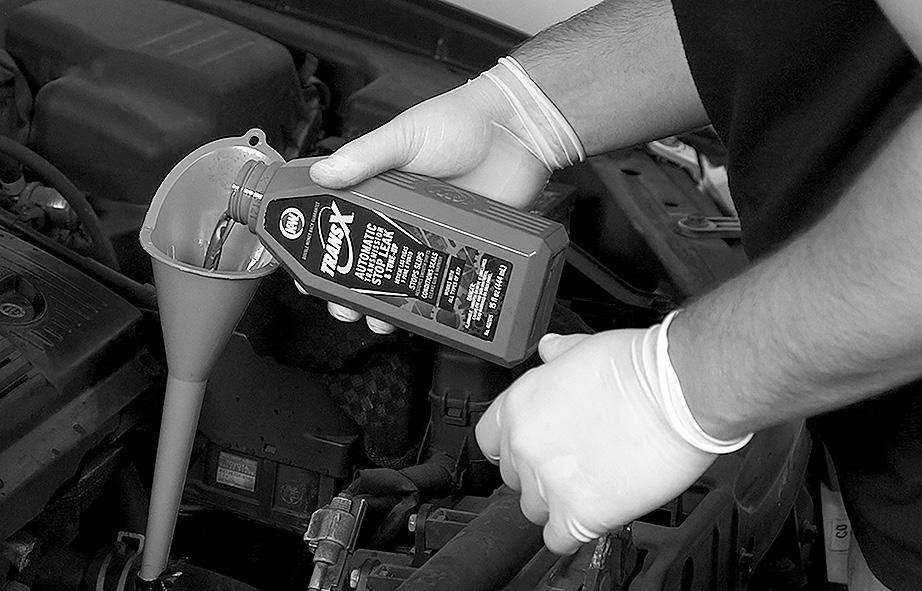
Gary Esse of Madison Classics started working on cars when he was 13 years old at his father’s gas station in Madison, Wis. As his interest in cars grew, he began buying and selling cars and parts on a regular basis. Before he knew it, selling N.O.S. Chevy parts had become the way he supported his family.
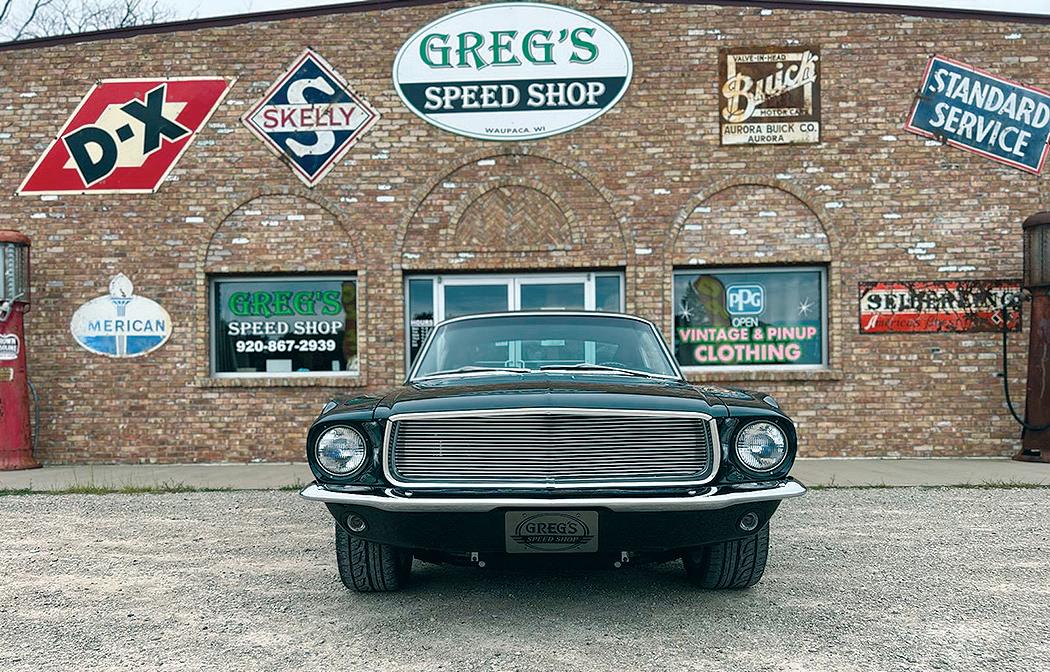
One day on the way home from Hersey, Penn., Gary started thinking that the Midwest needed a show like those found in Pennsylvania. Being a vendor himself, Gary understood what it took to put together a solid show, and with support of his wife LaRhee and close friends Madison Classics was born. Since then, the Madison Classic’s line of car shows has evolved into some of the Midwest’s largest Auto Swap meets, drawing crowds from all over the United States.
Gary Esse and Scott Bockover envisioned Madison Classics as something larger than just a swap meet. They believed that Madison Classics could help carry on the tradition of classic cars on to the next generation.

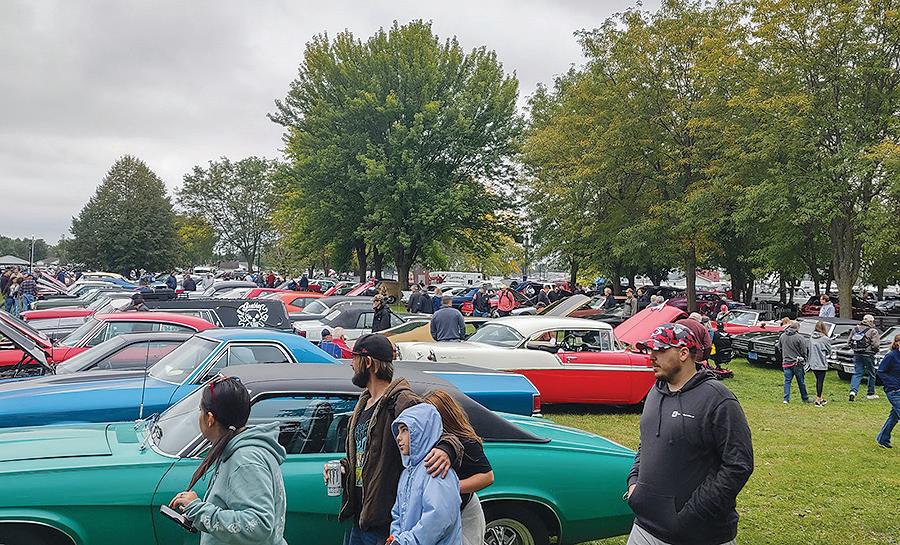
Being a family business, Gary, wife LaRhee and their three sons, Paul, Erick, and David each played key roles in the growth of Madison Classics. Together, the family has transformed Madison Classics into a career for all three sons.
LaRhee passed away after a seven-year battle with cancer. She was not only a founder of Madison Classics; she also took great pride in organizing the shows. She is dearly missed and will be remembered by many.
Gary and his three sons, Paul, Erick and David will take the torch and plan on operating the swap meets well into the future.
Next Event: April 28-30, 2023.
The Madison Classic’s Spring Jefferson Car Show and Auto Swap Meet is one of the largest car shows in the Midwest! For the auto enthusiasts this swap meet boasts thousands of car parts and car accessory vendors making it a great place to buy or sell those hard to find car parts. For those looking to buy or sell cars, the Cars for Sale Corral is full of 100’s of cars of all makes and models for sale! You are sure to find great bargains on awesome cars, car parts, and car accessories at the Spring Jefferson Swap Meet and Car Show!
Come join all the fun at the Spring Jefferson Swap Meet and Car Show.
Friday and Saturday $15 per adult is the spectator admission parking included. $10 Sunday parking included. No pets, please. Children under the age of 12 are free with paying adult.
Spectator hours
Friday 10 a.m. to 6 p.m.
Saturday 6 a.m. to 4 p.m.
Sunday 6 a.m. to 3 p.m.
Fairgrounds
503 N. Jackson St. Jefferson, Wis. 53549
Chamber of Commerce 305 S. Main Street Jefferson, WI 53549
Lodging, camping options
Local camping is available. Call 920988-3256 for Spangler’s Campground.
Fairground food
There is a great selection of food stands available on the fairgrounds and an ATM is located in the main activity building.
Rent a scooter or wheelchair for Spring/ Fall Jefferson from Event Scooters LLC or visit Eventscooters.com or call 262.677.2696
The car show has 100’s of awesome show cars and special interest vehicles that you’ll definitely want to check out! Please note the car show is Saturday and Sunday only.
The price to enter the car show is $15. per adult in the vehicle on Saturday and $10 on Sunday. Children under 12 are free when accompanied by an adult.
All makes, models and years of vintage character or special interest vehicles are welcome in the car show area. Vehicles
must be in running condition. Dash plaques for the first 200 vehicles registered are given out at 1 p.m. on Saturday and Sunday. Please – No “For Sale” signs or parts for sale in the car show area. Preregistration not required for show cars.
Cars for Sale Corral - 100’s Vehicles For Sale!
$60.00 price to enter a vehicle in the Cars for Sale Corral. Cars for Sale Corral spaces are available ahead of time or the entire weekend of the car show at the Cars for Sale Corral gate.$120.00 Non-running vehicles left on trailers will be charged. This price includes admission for the driver all weekend. There are no vehicle age/make/model restrictions in the Cars for Sale Corral. Oversized vehicles will be charged accordingly. The price is the same if you choose to attend one day or three.
Does not include separate parking fee for tow vehicles or spectator admission for additional occupants in the vehicle. Hours: Friday 10 a.m.-6 p.m. Sat/Sun 6 a.m.

